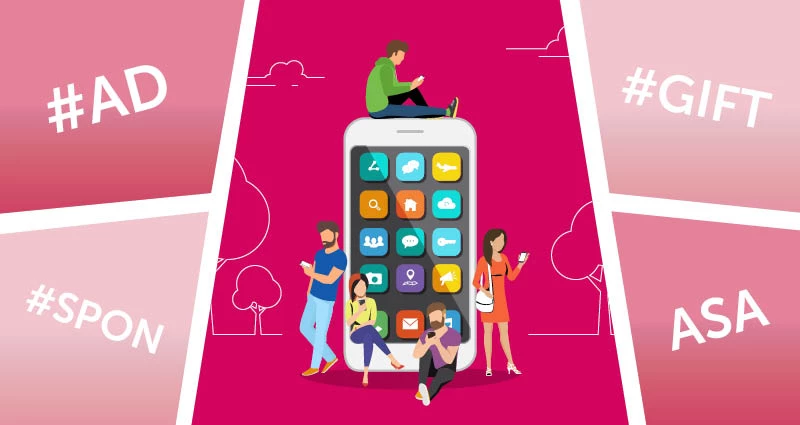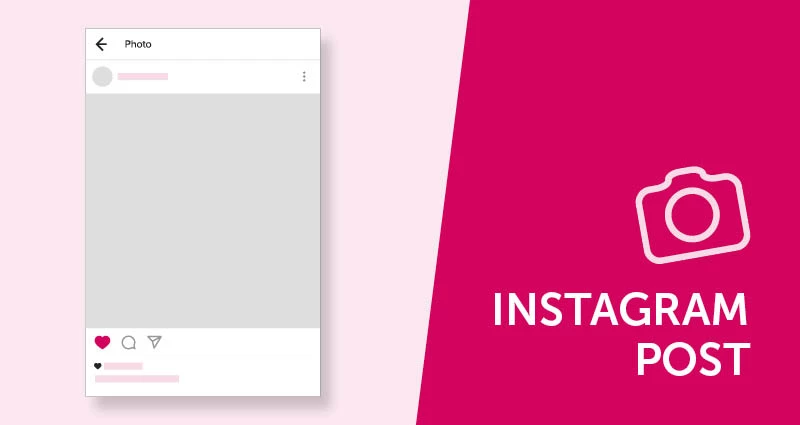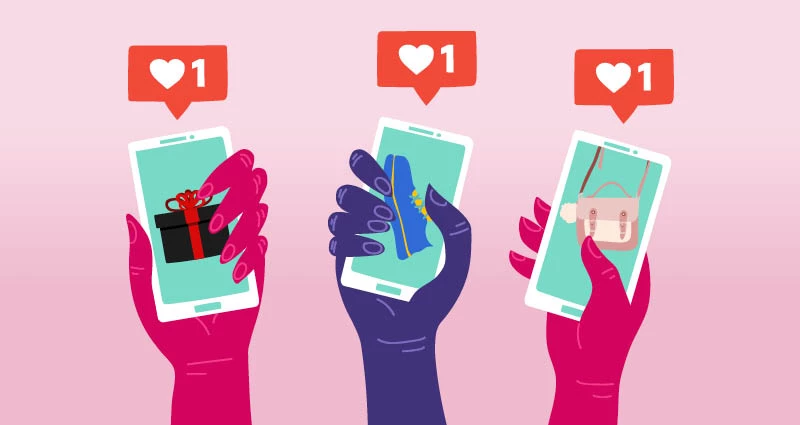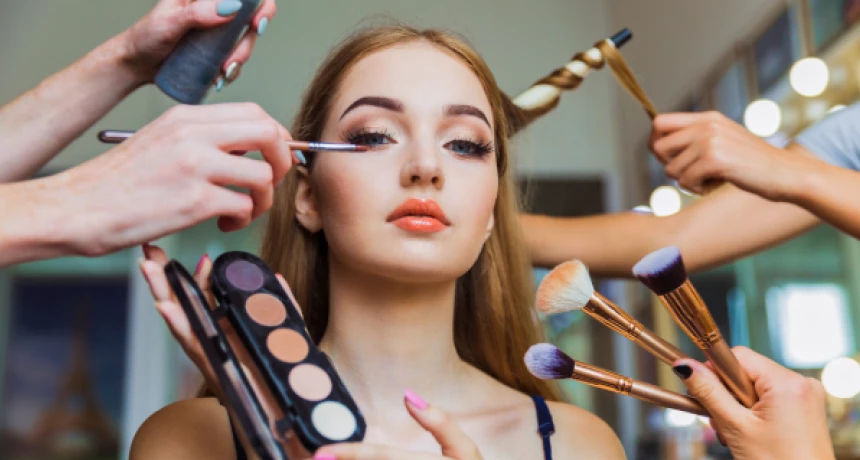If you’ve scrolled through Instagram or TikTok recently, you’ve likely seen your favorite social media influencers sharing posts with the hashtags #AD, #GIFT, and #SPON. Influencer advertising remains one of the most powerful forms of digital marketing today.
With the Advertising Standards Authority (ASA) and Competition and Markets Authority (CMA) tightening regulations around influencer marketing, transparency has become more crucial than ever. Influencers must clearly disclose paid partnerships to their followers, ensuring that branded content is easily identifiable.
One recent example is former Love Island star and social media mogul Molly-Mae Hague, who faced renewed scrutiny in late 2024 over undisclosed advertising. Despite stepping down as Creative Director of PrettyLittleThing (PLT) in 2023, Molly-Mae continues to promote brands across Instagram and YouTube. In November 2024, she shared a carousel of images featuring PLT outfits, failing to include a clear #ad disclosure. This led to an investigation by the ASA, which ruled that her content was misleading and breached transparency guidelines.
Similarly, TikTok influencer Alix Earle was warned by the ASA in early 2025 after promoting a beauty brand without proper disclosure. The watchdog found that her use of vague language like “obsessed with this product” did not clearly indicate a paid sponsorship.
The rise of AI-generated influencers has also complicated matters. Virtual influencers like Lil Miquela and Noonoouri now partner with major brands, raising new questions about advertising transparency and authenticity. Regulators are increasingly monitoring how these AI influencers disclose paid content.
With social media marketing continuing to evolve, influencers and brands must stay compliant with updated ASA and CMA regulations in 2025. Failure to do so can result in fines, post removals, and reputational damage in an era where digital transparency is more important than ever.
With there being uncertainty around what the best practices are for Instagram marketing and promotion, we’re here to help. As a leading Influencer management agency, we’ve compiled a guide to help influencers and brands alike to understand the policies they should follow when posting sponsored content.
When you share sponsored or paid-for content, it needs to be immediately obvious that it is an ad, both for the ASA and for consumers. This means that someone viewing your content shouldn’t have to spend too long trying to figure out if it is in fact sponsored or organic.
What are the Different Forms of Instagram Adverts?
Instagram is the predominant channel for sponsored posts and social media marketing. Before we delve into the best practices for brands and influencers, it can be important to know the different forms of Instagram adverts.
Currently, brands and influencers can share adverts and sponsored content in the following formats:
Stories ads Photo ads Video ads Carousel ads Collection ads
For each of these adverts, different call to actions can be applied. This includes “learn more” and “contact us” buttons being applied to photo ads and swipe up options for story ads. Whatever form of Instagram advert you choose, it’s important you follow the correct procedures.
What Counts as Advertising?
Surprisingly, it isn’t immediately obvious as to what counts as advertising and what doesn’t. This can be one of the many reasons influencers end up incorrectly labelling their posts and getting penalised for it.
Many people think that advertising only applies to content that influencers receive monetary payment for, such as promoting a brand in a brand awareness post and receiving a fixed payment in exchange. However, gifted products are also counted as a form of advertising, in the instance that the brand has control over the editorial content released.
For example, say you are a fashion influencer and a brand has provided you with a piece of clothing from their new collection. If the brand supplied you with specific messaging or hashtags to use in your post, you’ll need to label your post as an ad.
Affiliate marketing refers to when brands reward creators and influencers for bringing in increased traffic to their website and boosting their sales. In this instance, an influencer would be rewarded with a small percentage of the sales made from a specific product they endorsed across their social media channels.
What do Influencers Need to Say on their Sponsored Posts?
When an influencer uses Instagram to post an advert, they need to make this immediately clear on their post. One way that influencers can do this is to include #AD in the caption of their photo. Whilst this seems simple enough, there are a few catches.
For example, influencers will need to consider the following:
The AD hashtag must be placed at the top of the caption It cannot be buried amongst other hashtags at the end of the post or in the comments It can be written as ad, advert, advertising or advertisement and can either be written as is, or used as a hashtag Use the ‘paid partnership’ feature that is now provided on the platform
If you’re an influencer looking to share a post regarding your recent collaboration with a brand, or you’re promoting products as part of your brand ambassador agreement, these are the processes you’ll need to follow to ensure your post isn’t removed.
What Should be Avoided?
With ad, advert and advertisement being the recommended terminology to use for sponsored posts, the ASA have suggested that other labels and hashtags such as #spon, #sp, Sponsored Content and 'In association with' are not suitable. This is because they don’t make it clear enough that the post is in fact an advert.
The same goes for tagging or @’ing the brand in the post or thanking them for the opportunity in the caption. For example, if you’re an influencer and you’ve been sent a product to promote, using this terminology on your post will not be classed as acceptable.
Essentially, influencers need to make an advert as obvious as possible. With everyone using the same labelling and hashtags to differentiate their sponsored post from their usual organic content, there will be no grey areas.
What About Brands?
With Instagram receiving higher engagement rates compared to any other social media platform, it’s a no-brainer for brands to leverage this platform for their advertising needs, as well as combining this with influencer advertising. However, just like influencers, brands need to follow similar guidelines to ensure they aren’t crossing any lines.
This can include writing up a clear and concise agreement or contract for the influencer(s) they are working with. Ensure to outline what is expected of the influencer when they’re sharing sponsored content for consistent and compliant posts.
When it comes to promoting your own products or services, this should also be labelled as an ad. If you are posting regarding new products or services, you need to make it clear you are talking about your own products. As long as you are obviously talking about your own products, this should be good enough.
To summarise, when you’re creating your sponsored content, you should consider the following information before sharing your Instagram photo or uploading your blog post:
Is it immediately obvious that your content is an ad? Have you used the correct word to identify the content as an ad? Do people know it’s an ad before they click on or engage with the content? Is the identification that the content is an ad displayed in a prominent position?
If you’re ever in doubt and you can’t decide whether your post is an ad or not, we always recommend adding #AD at the very top of your post or caption. After all, it’s better to be safe than sorry!









